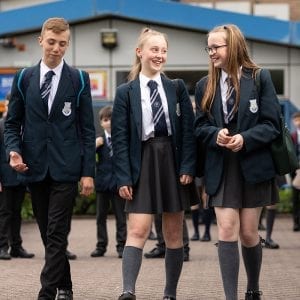Textiles
Vision
At Birchwood, we want to foster a love of creativity and appreciation of textiles through introducing pupils to a range of artists, techniques and processes that encourage originality and personal responses. Our curriculum navigates pupils through the crucial stages of designing, making, and evaluating, all underpinned with a technical knowledge of the materials, processes and skills needed to approach the subject with confidence.
We want students to understand the wider use of textiles and be aware of the exciting range of careers it can lead to. We also want out pupils to understand the transformative power of textiles and how skills learnt can be applied beyond school in a ‘make do and mend’ method to encourage students to think sustainably and repair and recycle, as much as possible.
How do we build on what students learn at KS2?
We want to ensure that our students are thoroughly supported in their transition from KS2 to KS3 Textiles. To do this, we work with local primary schools so that our curriculums complement one another. In year 7, we purposely prioritize revisiting and rebuilding on the following:
- Design: Respond to an artist and a design brief through initial and final design ideas
- Make: Create a hand puppet using a range of skills and processes
- Evaluate: Analyze an artist’s work, carefully considering developments during initial designs through to final. Recap stitches prior to progressing with making, review and reflect on work consistently throughout.
- Technical skills: Introduced to a range of materials and processes and reminded how to safely use them.
How do we cover the KS3 National Curriculum and beyond?
We believe that covering the KS3 National Curriculum is hugely important, but we also recognize how crucial it is for students to be exposed to wider knowledge beyond this.
We ensure that we cover the KS3 National Curriculum by covering the following:
- Year 7: Design and create a hand puppet inspired by the work of Jon Burgerman
- Year 8: Design and create a cushion inspired by the work of Frida Kahlo
- Year 9: Design and create a wall hanging inspired by the work of Cas Holmes and Ulla Stina Wikander
Beyond the curriculum, we provide:
- A KS3 textiles club
- KS4 intervention
- House competitions
- Artist workshops
- School trips
What do we cover in KS4 and how do we aspire towards KS5?
The structure for Textiles during KS4 is designed to ensure pupils feel confident and competent with the skills, process and techniques needed to meet the assessment objectives, whilst fostering a love of creativity and encouraging individual and personal responses. During the course pupils will be introduced to a wide range of artists and designers and develop a rich descriptive vocabulary whilst analyzing key features of their work. They will be encouraged to experiment with a wide range of processes, materials, and techniques, reflecting on work and refining outcomes throughout the course.
Assessment objectives
AO1: Develop ideas through investigation, demonstrating a critical understanding of sources.
AO2: Refine work by exploring ideas, selecting, and experimenting with appropriate media, materials, processes, and techniques.
A03: Record ideas, observations, and insights relevant to intentions as work progress.
A04: Present a personal and meaningful response that realizes intentions and demonstrates an understanding of visual language.
|
Component 1, project 1 |
30% |
|
Component 1, project 2 |
30% |
|
Externally set assignment |
40% |
We want to ensure that our students feel prepared for life beyond KS4 and aspire to continue to study textiles at KS5, to do this effectively we:
- Discuss the broad range of careers within the industry.
- Discuss courses offered at KS5.
- Develop the skills necessary for progressing onto KS5.
- Analyze a range of artists so pupils develop a broad descriptive vocabulary.
- Consistently reflect and refine work.





